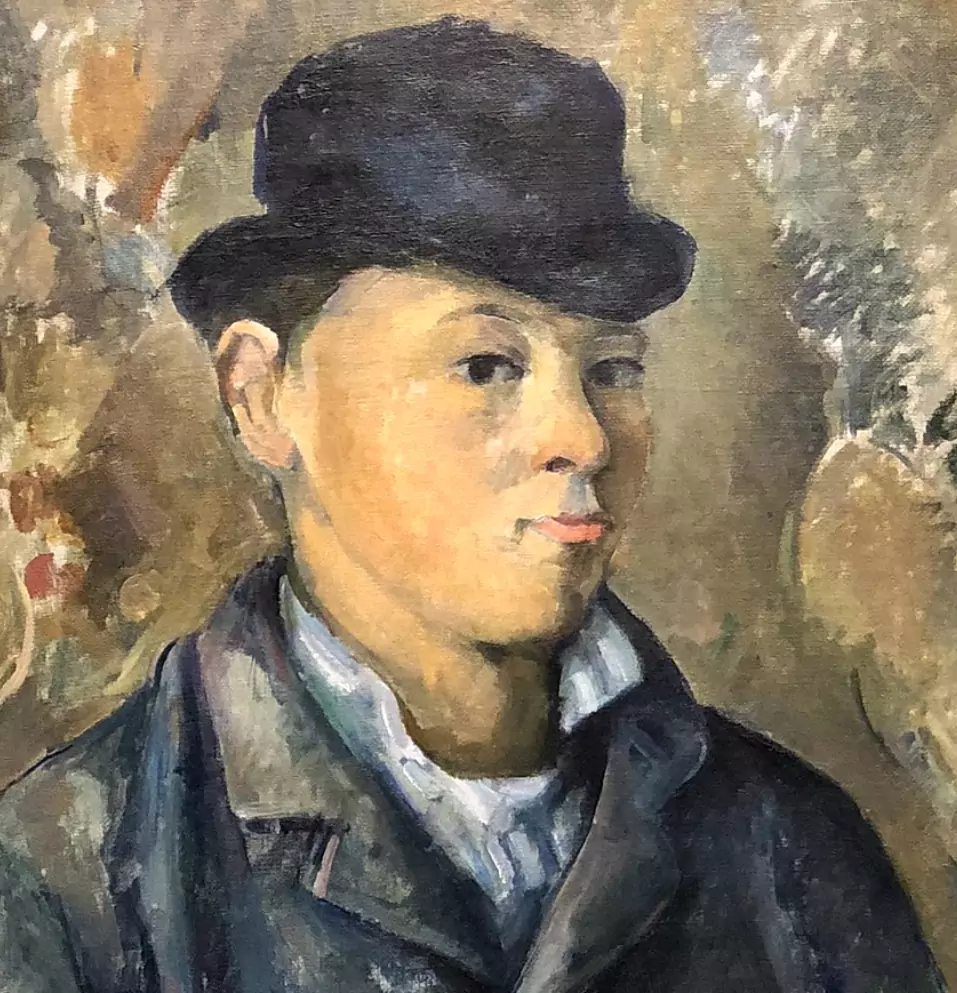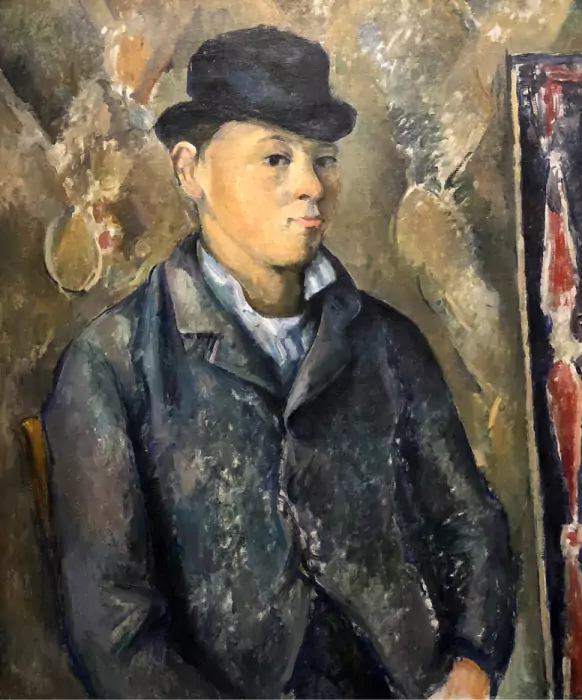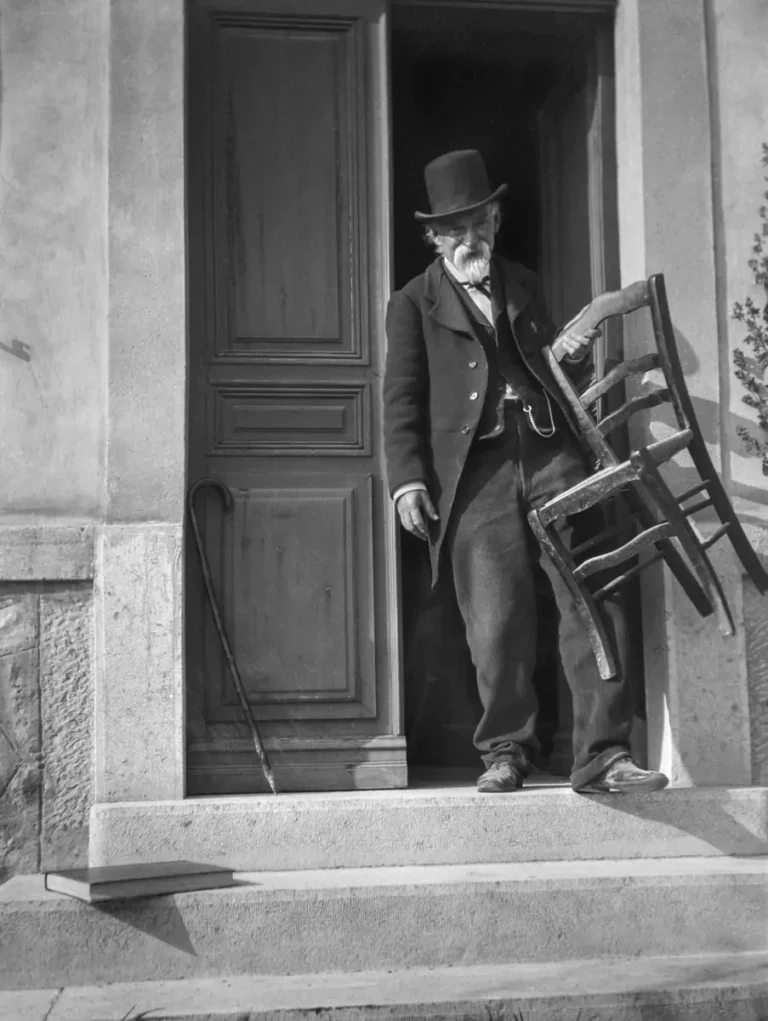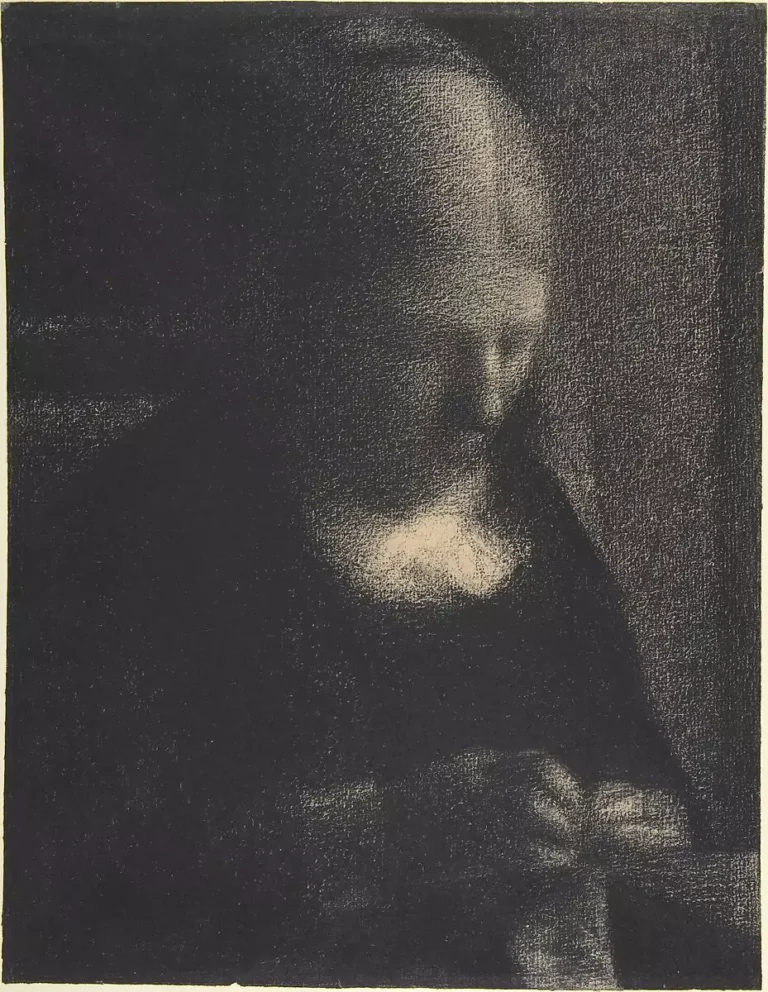Looking for a muse? Check no further. Discover the Best of Art, Culture, History & Beyond!

- Artist: Paul Cézanne
- Title: Paul Cézanne, the Artist’s Son
- Year: 1887
- Medium: Oil on canvas
- Dimensions: 73 x 60 cm
- Location: Private Collection
A Personal and Intimate Portrait
Paul Cézanne, one of the most influential figures in modern art, often turned to those closest to him as subjects for his portraits. His 1887 painting, Paul Cézanne, the Artist’s Son, presents a deeply personal and introspective depiction of his only child. The work, executed with his signature brushwork and masterful use of color, captures a moment of quiet contemplation, demonstrating Cézanne’s evolving approach to portraiture.
Cézanne’s portrait of his son is characterized by the solidity of form and subtle tonal transitions that define his post-impressionist style. Unlike the loose, fleeting brushstrokes of the Impressionists, Cézanne’s technique here is deliberate and structured, emphasizing the underlying geometric shapes that compose the figure. The boy’s facial features are softly modeled, yet his expression remains somewhat ambiguous—a hallmark of Cézanne’s portraits, which often resist overt emotional display.
The composition is straightforward yet masterfully arranged. The artist’s son is seated in a dark jacket and bowler hat, his slightly turned posture adding a sense of depth and naturalism. The background, a richly textured pattern of muted earth tones, complements the figure without overpowering it. Cézanne’s restrained palette and carefully placed color accents create a harmonious balance, drawing attention to the subject while maintaining an organic unity with the surrounding space.

Though the portrait is of a familial subject, it is not overtly sentimental. Cézanne’s analytical approach to painting is evident in the way he constructs the face with patches of color and layered brushstrokes. His son’s gaze is distant, almost detached, suggesting an introspective mood rather than direct engagement with the viewer. This subtle detachment is typical of Cézanne’s portraits, where psychological depth is conveyed through structure and color rather than overt emotion.
By the late 19th century, Cézanne had begun to move beyond Impressionism, laying the groundwork for the development of modern art. His method of breaking down forms into their essential shapes influenced movements such as Cubism, with artists like Picasso and Braque drawing inspiration from his innovative approach. Paul Cézanne, the Artist’s Son is a testament to his ability to balance personal subject matter with a rigorous exploration of form and structure.
This portrait stands as a compelling example of Cézanne’s mastery, merging personal connection with artistic experimentation. It remains a significant work in understanding the artist’s transition from Impressionism to a more structured, modernist approach, solidifying his role as a bridge between 19th-century art and the revolutionary movements of the 20th century.

This article is published on ArtAddict Galleria, where we explore the intersections of art, history, and culture. Stay tuned for more insights and discoveries!



